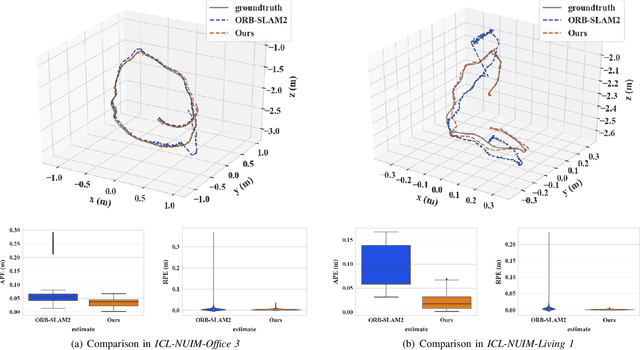FastORB-SLAM: a Fast ORB-SLAM Method with Coarse-to-Fine Descriptor Independent Keypoint Matching
Paper and Code
Aug 22, 2020



Indirect methods for visual SLAM are gaining popularity due to their robustness to varying environments. ORB-SLAM2 is a benchmark method in this domain, however, the computation of descriptors in ORB-SLAM2 is time-consuming and the descriptors cannot be reused unless a frame is selected as a keyframe. To overcome these problems, we present FastORB-SLAM which is light-weight and efficient as it tracks keypoints between adjacent frames without computing descriptors. To achieve this, a two-stage coarse-to-fine descriptor independent keypoint matching method is proposed based on sparse optical flow. In the first stage, we first predict initial keypoint correspondences via a uniform acceleration motion model and then robustly establish the correspondences via a pyramid-based sparse optical flow tracking method. In the second stage, we leverage motion smoothness and the epipolar constraint to refine the correspondences. In particular, our method computes descriptors only for keyframes. We test FastORB-SLAM with an RGBD camera on \textit{TUM} and \textit{ICL-NUIM} datasets and compare its accuracy and efficiency to nine existing RGBD SLAM methods. Qualitative and quantitative results show that our method achieves state-of-the-art performance in accuracy and is about twice as fast as the ORB-SLAM2
 Add to Chrome
Add to Chrome Add to Firefox
Add to Firefox Add to Edge
Add to Edge